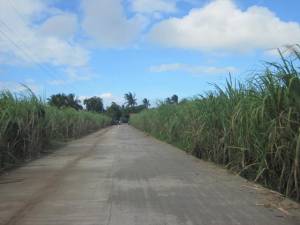This post appeared on the Kiva Fellows blog. Read the original here.
Last week I went to a town called La Castellana about an hour south of Bacolod to visit the NWTF branch there. I was there to meet a handful of Kiva borrowers and interview them about the progress of their loan. Over the course of two days, I met six women that currently have a loan with Kiva, and another four that I am going to post to the site this week. La Castellana is a town in the mountains that is largely supported by agriculture. It is also one of the major areas impacted by agrarian reform and home to some of NWTF’s poorest clients.
The Philippines is a country of ~90 million people, half of whom live in rural areas. Eighty percent (80%) of Filipinos living below the poverty line are in rural communities, supported primarily by agriculture. Over the past three decades, agricultural land ownership in the Philippines underwent a transformation via a series of legislation known as Comprehensive Agrarian Reform Program (CARP) passed in 1988. Designed to provide landless farm workers a piece of land, the program has redistributed farmland in 1.1-hectare units. It is a controversial topic, and its effectiveness at combating poverty is debatable. Regardless of whether or not CARP has worked, the ARBs (Agrarian Reform Beneficiaries) – the recipients of the farmland – are the poorest of the poor. In Negros alone, there are 112,000 ARBs working 170,00 hectares. There are no economies of scale on a one-hectare farm. Fertilizer, farming equipment and labor are expensive, and they don’t have the capital. The average land tract size for ARBs in Negros is 1.25 hectares, with input costs of 35,000 pesos (~$800 USD) per hectare. The government gave them land but failed to provide adequate funding, agricultural training, or meaningful support. In many ways, the cards are stacked against them. So, unable to make ends meet, many just rent or sell their land back to the owner. It is a vicious cycle, but microfinance can offer a solution. Continue reading
Continue reading


